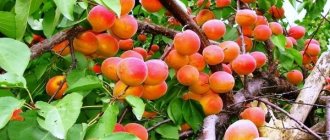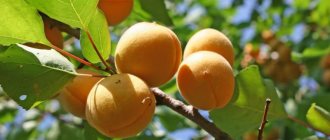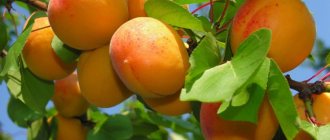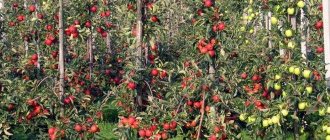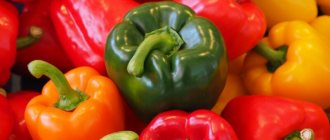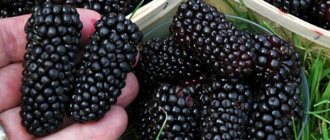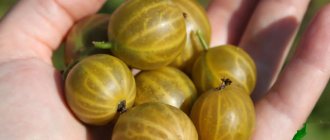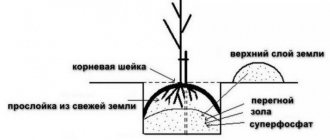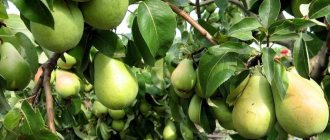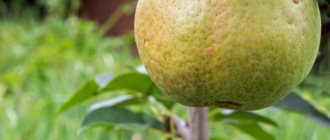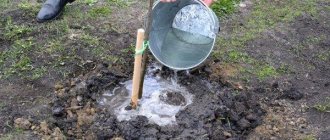- Apricot in the middle zone: growing features and best varieties
- Brief botanical description of the plant
- The best apricot varieties for the middle zone
- Which apricot seedling to choose
- Agricultural technology for growing apricots in the middle zone
- Choosing a place to plant Apricot
- Apricot planting
- Apricot care in the garden
- Watering Apricot
- Apricot feeding
- Apricot pruning
- Wintering apricots in the middle zone
- Apricot diseases and pests
- Video: apricots in the middle zone
Apricot in the middle zone: growing features and best varieties
Fragrant, aromatic apricots with soft, velvety skin and pulp that melts in your mouth are loved by adults and children. They make excellent preserves, marmalade, pastilles, dried fruits and juices. It is not surprising that apricot trees are grown in almost every garden in regions with a suitable climate. In this article we will tell you which apricot varieties are most suitable for central Russia. In addition, we will talk about how to choose the right place for a seedling and how to care for it so that the plant is formed correctly and bears fruit abundantly.
Apricot in the middle zone - growing features and best varieties
Mid-early and late apricot varieties, their characteristics
Among the numerous high-quality varieties whose ripening period falls at the end of July - mid-August, the following can be distinguished: Khabarovsky, Vostorg, Samara, Northern Triumph, Snegirek, Honey, Saratov Ruby, Gift of Heaven.
Khabarovsk
Apricots of the Khabarovsk variety
The variety is super productive, early fruiting, with an average level of winter hardiness. The fruits are small, weighing up to 45 g. The shape is round with a clearly defined longitudinal seam. Ripe apricots are yellow-green with a lumpy, heavily pubescent surface. Transportability is low, so the fruits are more suitable for fresh consumption than for preservation.
Snegirek
Apricot variety Snegirek
Apricot Snegirek is rightfully considered the leader among winter-hardy species, since this small tree is able to survive in the harshest conditions. It bears fruit annually and abundantly: on average, one tree produces 7-10 kg of small (15-18 g), but fragrant and juicy fruits.
Samara
Apricot varieties for central Russia - Samara
Ripenes in the first ten days of August. The fruits are medium size (17-20 g), egg-shaped. The color of ripe apricots is yellow and uniform. The skin is tender, slightly pubescent. The pulp is uniform, juicy and aromatic. Transportability and commercial quality are high. Suitable for universal consumption.
The next variety that will feel good in the middle zone is apricot with the interesting name Chalychka. This tree is very small, it can grow no more than one and a half meters in height. Its name comes from the characteristic cup-shaped crown. This is an excellent winter-hardy hybrid that does not require any special care and bears fruit annually and in large quantities.
Khabarovsk
Sometimes apricots are slightly damaged by aphids and codling moths, which can be eliminated with the help of drugs such as
Snegirek
Young apricot trees need more attention because they are less hardy than adults. But you should always take good care of both babies and old people, especially in May-June, so that they develop a powerful, healthy leaf canopy as early as possible.
Apricot loves
Samara
Growing apricots in the Moscow region is not easy: plants require constant attention and care, but patience, work and great desire always bring worthy fruits.
, the crown is mostly spreading, but there are exceptions - the Lel variety with a compact crown. The root system is mostly superficial, usually located in a 0-40 cm layer of soil. Blooming apricot is very beautiful, and since it blooms before everyone else, it greatly enlivens the spring garden.
The fragrant orange fruit is often called the Armenian apple. This is primarily due to the question of the territory of origin of the apricot. Modern scientists identify from 3 to 6 places where this tree could first appear. According to one version (the most probable), in the Tien Shan (China). But in the recent past, Armenia was considered the birthplace of the tree, from where the apricot later came to Europe.
This crop is a deciduous tree, growing in height from 5 to 8 meters. The color of the bark on old specimens is gray-brown, cracking longitudinally. Apricot is a long-liver; in warm climates, trees grow up to 100 years. The leaves are ovate in shape, alternate in arrangement, up to 9 cm long. The flowers are sessile and solitary, the petals are white. The fruit is a single-drupe yellow-red color with a rounded outline.
Brief botanical description of the plant
Apricots in suitable conditions can grow up to 8 m. The lifespan of centenarians reaches 100 years, but the period of active fruiting lasts about 35-40 years and directly depends on the quality of care and the correct planting site.
The crown of the tree is spreading and needs sanitary pruning and shaping. The bark is gray-brown in color and begins to crack with age. Apricot leaves are slightly elongated towards the tip, sit on thin petioles, arranged alternately. Flowering times vary depending on the region. Basically in the middle zone it begins in mid-April.
Apricot bears fruit in July-August. The weight of the fruit ranges from 15 to 80 grams. The shape of the fruit is round or slightly elongated with a pronounced longitudinal groove. Inside there is a slightly flattened bone. Its core can be sweetish or with a pronounced bitterness.
The plant is considered heat-loving. Feels great in the warm, humid climate of Armenia, the Mediterranean coast, Asia, the Caucasus, and Crimea. Nevertheless, breeders have developed varieties that can tolerate frosts down to -30...-35°C, withstand prolonged drought and withstand windy weather. Many varieties of apricot are now successfully grown in the Volga region, Moscow region, and some regions of the Urals and Siberia.
Apricot is a long-lived plant; in good conditions it can live up to 100 years.
Varieties and varieties
Yellow plum, zherdel, morel are common names for apricot. China, Greece and Armenia are considered its homeland. And the fruit tree belongs to the genus Plum of the Rosaceae family. The height of apricot can reach 8 m. The leaves are petiolate, round, ovate, about 6–9 cm long. The flowers are sessile, solitary. They bloom even before the leaves appear. Apricot flowering lasts from March to April, and from June to August the yellow fruits ripen.
About 44 varieties of apricots are cultivated in Russia, but not many of them are frost-resistant.
- Apricot “Red-cheeked” is a frost-resistant self-fertile variety, a vigorous tree. Begins to bear fruit at 3–4 years of age. The fruits are large, bright orange with red barrels. Does not require pollination by other varieties. Perfect for making compote, dried fruits and marshmallows.
Apricot "Red-cheeked"
- Apricot “Black Prince” is a fruit tree, a hybrid of garden cherry plum and apricot. Quite a rare variety. It is a relatively frost-resistant species and therefore requires careful shelter before wintering. For the same reason, fruits from the tree are removed unripe. The Black Prince fruit differs from other apricots in its unusual color and piquant tart taste. Ideal for making jam.
Apricot "Black Prince"
- Apricot "Lel" is a low tree, up to 3 m in height. It begins to bear fruit 3–4 years after grafting. It tolerates frost well, bears fruit regularly, and the yield is average. The fruits are small, orange in color without pubescence. They have the perfect combination of sugar and slight sourness. Suitable for preparing for the winter as compotes and jams.
Apricot "Lel"
- Apricot "Tsarsky" is an excellent choice for planting on a personal plot in the Moscow region. Fruiting begins 3–4 years after the tree is grafted on different types of shoots. Frost-resistant species. The fruits are small, oblong in shape. The color is bright orange, sometimes with a slight blush. The pulp is juicy, sweet and sour. They are consumed both fresh and as desserts and preparations for the winter.
Apricot "Tsarsky"
- Apricot “Triumph Northern” is a hybrid of apricot “Red-cheeked” and “Northern early”. Vigorous fruit tree. Fruits in the 4th year of life. The fruits are large with juicy pulp. Can be consumed fresh. Winter-hardy. Resistant to diseases.
Apricot "Triumph Northern"
Apricot "Lel"
Apricot "Tsarsky"
The best apricot varieties for the middle zone
Apricot varieties are traditionally divided according to their fruiting dates into early, middle and late.
On a note! To enjoy ripe fruits longer, it is worth planting 2-3 trees in the garden with fruits of different tastes and their ripening time.
The very first apricots in the middle zone ripen in July, late varieties bear fruit until the 20th of August. With such a spread, it is convenient to collect and process the crop.
The size and taste of the fruits are inferior in terms of sweetness to their southern counterparts. But the sweetest varieties of apricots, as a rule, cannot withstand harsh winters, hot, dry summers and sudden temperature changes in the spring.
Apricot "Khabarovsk".
Early varieties of apricots are excellent for short, hot summers, but do not tolerate return spring frosts and winter frosts. Medium-fruiting apricots are more resistant to temperature fluctuations, and late varieties tolerate frosty winters well.
The following varieties of apricots have won the trust and recognition of gardeners in the middle zone:
- Apricot “Red-cheeked” - the ripening period is extended to July and early August, winter hardiness is high, immunity to diseases and pests is average.
- Apricot "Khabarovsk" is valuable for its stable yield, edible kernel, and compact crown.
- Apricot Apricot "Guiani" is a late-ripening variety, the yield is high, the kernel is sweet.
- “Pacer” is beautiful in appearance, the fruits are medium-sized, slightly pubescent, delicate yellow-pinkish in color, the tree height is about 3 meters.
- Apricot “Saratov Ruby” is resistant to frost, drought, bark heating, can be stored for a long time, and tolerates transportation well.
- Apricot "Edelweiss" - has good immunity to typical stone fruit diseases, the yield is average, it is well stored and transported.
Apricot "Pacer".
Apricot varieties also deserve attention: “Alyosha” , “Khabarovsky” , “Tsarsky” , “Lel” . They are distinguished by their winter hardiness : “Snegirek” , “Honey” , “Hardy” . “Tsarsky” , “Dessertny” , “Triumph Northern” do not require additional pollination .
All varieties of apricot require manual picking when harvesting. Slightly unripe fruits are used for transportation. For the preparation of preserves, compotes, jams, juices and marshmallows, fully ripened ones are taken.
The right variety and compliance with the rules of agricultural technology will allow you to grow a bountiful harvest of aromatic apricots in the middle zone.
Apricot "Snegirek".
The most popular varieties with descriptions
Over the years of growing apricots in the middle zone, gardeners have developed their favorite varieties. They most often plant them on their plots to obtain a harvest of healthy fruits.
Guiani
The ripening period occurs at the end of August. The fruits are orange-pink in color with an easily removed seed. Yield indicators are at a high level. A distinctive feature is that the kernel of this apricot is sweet. The height of the tree reaches 7 m.
Pacer
The Pacer tree reaches a maximum height of 3 m. Productivity is average but stable. The fruits will ripen towards mid-August. The bone and pulp separate well. A characteristic sign is slight pubescence on the skin and blush.
Saratov ruby
This apricot deserves the attention of gardeners not only due to its excellent winter hardiness, the resistance of flower buds to low temperatures, but also for the resistance of the bark to warming. The fruits at the stage of technical ripeness are orange in color with a beautiful ruby blush. The stone is small and separates well from the pulp. The harvested crop is suitable for storage and transportation.
Favorite
Large-fruited apricot with dense and tasty pulp, a small stone. The fruits are orange in color, with a red blush on one side. Among the disadvantages, gardeners point out very late ripening periods. Sometimes the harvest did not even have time to fully ripen.
Edelweiss
A distinctive feature of the fruits of this variety is the original spout. They are painted yellow with a slight blush. The tree reaches a maximum height of 3 m. The harvested crop can be stored and transported over long distances.
Aquarius
The yield of this variety is high and stable. The tree is tall and powerful. The fruits are colored uniformly yellow, the seeds are small. The taste is harmonious sweet and sour. The ripening period for apricots is average.
Countess
Tall apricot with medium ripening, sensitive to weather conditions. The color of ripe fruits is creamy and has a blush. The pulp is sweet, the stone comes off perfectly. In damp and rainy summer conditions, the tree is affected by clusterosporiasis.
Iceberg
The harvest ripening period occurs at the end of July or beginning of August. The fruits at the ripe stage are yellow-orange in color, with a slight blush and barely noticeable pubescence. The stone is small and separates perfectly from the juicy pulp.
See also
Description and propagation of Chinese dates, planting and caring for the tree
Read
Alyosha
A tall variety that, during flowering, gives the garden extraordinary beauty with its large pinkish flowers. Ripening dates are early. By the end of July you can enjoy the bright yellow ruddy fruits. Gardeners note such a disadvantage as a large pit in apricots.
Tsarsky
The Tsarskogo tree reaches a maximum height of 4 m. The diameter of the flower is about 4 cm. The ripening of the crop occurs at the beginning of August. The fruits are large, with small seeds. Their color is yellow with a slight blush, and there is slight pubescence. A characteristic feature is a strong classic aroma.
Lel
A small tree that can become a real garden decoration. The harvest ripening period is early. When ripe, the fruits become orange in color and have a glossy skin. The taste of the pulp is balanced sweet and sour. The bone is large and separates perfectly.
Large-fruited
Nowadays, apricot varieties are becoming increasingly popular, giving gardeners large and tasty fruits. It is precisely these characteristics that the breeders working on developing new products have focused on. The following large-fruited varieties are suitable for cultivation in the middle zone:
- Lejuna;
- Triumph Northern;
- Masis Pineapple;
- Shalah Pineapple;
- Red-cheeked.
They are distinguished not only by the attractive appearance of ripe fruits, but also by their excellent taste.
Winter-hardy varieties
If it is not possible to prepare the garden for winter every year and create insulation for fruit trees, then when choosing varieties you should give preference to winter-hardy varieties with good marketability and taste characteristics. For growing in the middle zone, the following are best suited from this category:
- Hardy;
- Red-cheeked;
- Darling;
- Honey;
- Russian;
- Snowfinch;
- Triumph Northern.
Many of the presented varieties have stood the test of time, and their popularity continues to grow every year.
Varieties of columnar apricots
For a small area, the best fruit trees are columnar ones. Despite their small size, they produce excellent fruit yields, and their characteristics are in no way inferior to their tall, spreading counterparts. The best varieties of apricots of this type are:
- Prince Mart;
- Star;
- Gold;
- Sunny.
Low-growing and dwarf species
It is convenient to harvest from a low tree. In addition, it does not take up much space and does not create unnecessary shade for other plants. Caring for such a crop is also simplified. The best low-growing varieties of apricots are:
- Snowfinch;
- Cup;
- Black mouse;
- Black Prince.
These plants are distinguished not only by their dwarf size, but also by their excellent winter hardiness. In the middle zone they overwinter without additional shelter.
Self-fertile
If the garden plot is small and it is not possible to plant many trees there, then it is recommended to give preference to self-fertile apricots. They show excellent results even if there are no pollinating varieties nearby. The most popular among gardeners are:
- Triumph Northern;
- Tsarsky;
- Sardonyx;
- Hardy;
- Dessert;
- Snowfinch;
- Lel.
Crops with black fruits
Lovers of exotics and everything unusual should like varieties of apricots with black fruits. Such fruits look very attractive and immediately attract attention. The plant itself is a hybrid obtained by crossing cherry plum and the usual apricot. Common varieties that produce black fruits:
- Black Prince;
- Black velvet;
- Melitopol black;
- Korenevsky black;
- Black mouse;
- Lugansk black.
Which apricot seedling to choose
It makes no sense to grow apricots from seeds; it will turn out wild. To maintain the necessary varietal qualities, the plant requires grafting. Therefore, it is best to purchase plants from nurseries, agricultural fairs or garden centers just before planting.
When examining a young tree, you need to pay attention to the fact that the root system is well formed, without signs of drying out. A clearly defined grafting site indicates high-quality grafting and good regeneration. The part of the trunk from the roots to a height of half a meter should not have cuts, peeling of the bark or other flaws. Make sure that the buds on the upper and main side branches of the apricot are alive.
It is better to give preference to two-year-old apricot seedlings. Annuals in the middle zone often freeze out in the first winter.
Rarely, it is allowed to purchase and transplant three-year-old seedlings. But the older they are, the greater the likelihood of difficulties adapting to a new place.
Northern Triumph
Yalta fruits have excellent canning and table qualities, and therefore can be safely used fresh or prepared.
The variety is characterized by high yield and good winter hardiness. In addition, high-quality fruits can be stored for a long time and consumed raw and prepared (compotes, preserves, jams, etc.).
Another variety that can be grown on your own plot in the middle zone of the country is Aquarius. It is a seedling of the Lel variety obtained from open pollination. L.A. Kramarenko was singled out, and the originating institution is the Main Botanical Garden. Aquarius is a tall, well-developed tree, reaching 6 meters in length, with medium-sized flowers and few-branched annual shoots. The fruits are round in shape with a characteristic seam, and weigh about 30 g.
, reducing the size of the tree.
A variety with high winter hardiness of the tree and medium hardiness of the flower buds. It is zoned for the southern part of the Central Black Earth zone. Large fruits weighing up to 55 g are yellow-orange in color. They are used mainly fresh. This variety is characterized by the formation of vigorous trees and a spreading crown. Fruiting occurs in the 4th year of life.
Agricultural technology for growing apricots in the middle zone
The lifespan of the plant, the duration of the fruiting period, taste and the number of ripened fruits depend on the correct choice of place for planting and compliance with the technology of growing apricots.
Choosing a place to plant Apricot
It should be remembered that apricot does not like crowding. Its root system is powerful, going deep. For a tree to feel good and have all the prerequisites for successful fruiting, it needs:
- slight elevation;
- low groundwater level;
- good drainage;
- absence of other trees closer than 5 meters;
- wind protection;
- soil saturation with microelements.
It is worth considering that close groundwater causes irreversible rotting of apricot roots. In such conditions, the tree will live at most 5-6 years, giving 2 harvests, and then die.
When choosing a place to plant apricots, you should avoid lowlands and southwestern slopes.
If the apricot variety is self-fertile, then you can get by with 1 tree. But it is better to plant 2-3 seedlings of different fruiting periods.
Apricot does not tolerate proximity to most fruit trees. It should not be planted closer than 10 m from cherries, walnuts, chokeberries, apple trees, and cherries. He will respond favorably to the cherry plum, thorn, and dogwood growing nearby.
Between tall trees you need to maintain an interval of at least 5 meters. Varieties with crowns that are more compact in size can be arranged in a checkerboard pattern.
For successful pollination, it is best to plant different varieties of apricot in one part of the plot.
Planting a two-year-old apricot seedling.
Apricot planting
A hole for planting apricots requires a large hole, at least 0.8 m in length and width, and a depth of 2 times the root system.
The place is prepared 2 weeks before planting. Drainage is placed at the bottom, a combined fertilizer mixture is added, consisting of 2–3 buckets of humus, 200 g of ash, 400 g of potassium sulfide and 700 g of superphosphate. Then a layer of garden soil is laid and the planting site is left to shrink.
In Siberia and the Urals, apricots are usually planted in the spring, in early May, when the soil is evenly heated. In the Volga region and the Moscow region, it is preferable to plant apricots in early autumn. The tree will not be threatened by drought and sunburn; it will have time to take root and gain strength before wintering.
Apricot planting procedure:
- place the seedling in the hole;
- cover with earth;
- water generously;
- tie to a support;
- mulch the tree trunk circle with sawdust and peat.
With the root system closed, the seedling is placed in the hole along with a lump of earth. And if the roots are open, then before planting they are kept for several hours in a weak solution of mullein or in a clay mash.
Note! when planting an apricot, its root collar should rise 4-7 cm above the ground surface.
Varieties of columnar apricots
Columnar trees are the latest achievement of breeders. Such fruit crops take up much less space than ordinary trees due to their compactly formed crown, reminiscent of a column. Usually its height does not exceed 2.5–3 m, and its width is 0.3–0.5 m.
Despite their compact size, the yield of columnar fruit trees is not inferior to other, conventional varieties. The most famous columnar apricot varieties are listed below.
- Sunny, or Sunny Summer. Apricot is medium-sized, about 2.5 m high. Self-sterile, requires nearby pollinating neighbors. Winter hardiness is good, down to -35 °C. Fruiting is extended, occurring in August. The fruits are large, weighing 40–60 g, bright orange, golden, with a characteristic blush. Productivity from one tree is up to 15 kg.
- Gold (Gold). Self-fertile variety of mid-early ripening. Tree height is up to 2.5 m. Winter hardiness is above average, up to -35 °C. The fruits ripen in early August. Ripe apricots have an elongated shape, a bright yellow color and a diffuse pink blush. Fruit weight 50–55 g.
- Star. Large-fruited variety, average fruit weight is about 60 g, fruits of 80–100 g are also found. The tree is self-fertile. Ripens quite late, at the end of August. Apricots are yellow in color, juicy, with thin skin and very aromatic pulp. The yield is about 10 kg per tree.
- Prince Mart (Prince). Winter-hardy variety with consistently high yields. Self-fertile. Ripens in late July – early August. The fruits are bright orange, uneven in size and weight, from 30 to 60 g. The tree is small in height, its maximum size is 2 m.
Columnar apricots require constant pruning to maintain their shape. Without it, the tree will soon turn into an ordinary one.
Apricot care in the garden
Apricot is unpretentious, it is often planted as part of urban landscaping in the Volgograd, Akhtubinsk, and Samara regions. However, some care rules must still be followed.
Watering Apricot
Watering the apricot should be plentiful, but rare. Water should not be allowed to accumulate in the tree trunk circle. In the spring, it is purposefully removed from the trunk, for which earth or sand is added, and the seedlings are planted on small elevations. An adult tree requires 3-4 waterings per season.
Apricot feeding
When planting apricots, fertilizers are placed in the planting hole. These fertilizers are usually sufficient for the tree for the first two years of its life.
Starting from the third year, fertilizing is carried out three times per season:
- Nitrogen fertilizers are needed in spring. Urea, chicken manure solution, and saltpeter are used;
- during the formation of apricot ovaries, it is good to use complex fertilizers for fruit trees, which are rich not only in macro-, but also in microelements;
- In the fall, in order to prepare the trees for winter, potassium and phosphorus fertilizers (without the nitrogen component) are applied.
Apricot is recommended to be planted away from other fruit trees.
Apricot varieties included in the State Register
And today, work on developing new varieties of apricots continues, but there are those that are included in the register and are considered the most suitable for our climate. They have passed many tests both for the quality of taste and for their tolerance to low temperatures and the unpredictability of the off-season.
The variety was obtained in 1988 by Moscow breeders. The tree has a large volumetric crown 3 - 4 m in circumference with spreading straight branches directed upward, and its height is about four meters.
The tree is medium-sized, the height is usually no more than 4 m, the crown is not very branched, the growth is moderate. The variety was also bred in the Botanical Garden and its characteristics were checked for more than 10 years before it was entered into the State Register.
- Flowering is characterized by lush white flowers.
- The fruits weigh 20 - 22 grams, oval, the skin is dense and pubescent. The color is rich, yellow. In some cases there is a slight reddish tint.
- The pulp is warm yellow-orange in color, dense and juicy, aromatic, easily separated from the stone.
- The variety is very undemanding to both weather conditions and soil composition.
One of the most famous among gardeners - lovers of early ripening varieties. Popular due to its taste.
- The tree is medium-sized, height ranges from 3 m to 4 m.
- The flowers are white, large with a diameter of 3.5 - 4 cm.
- The leaves are dark green, pointed at the ends, medium-sized.
- The fruits are small, slightly flattened, weight about 20 grams, yellow in color.
- The skin is thin, without hairiness, sometimes with a dotted reddish blush.
- The pulp is yellow-orange, juicy and tender, easily separated from the seed. Taste qualities are rated 4 out of 5.
- The tree reaches a height of about 6 m. The branching is quite weak. Fruiting begins no earlier than three years after planting the seedling. The leaves are large and smooth, dark green.
- It blooms with small white flowers in large quantities.
- The fruits are quite large, 28 - 32 g, have a pronounced seam, and are round. The skin is dark yellow and thin, with a slight blush.
- The pulp is juicy, has a bright yellow tint, easily separates from the seed, the fiber density is average, and the structure is delicate.
The variety was created in 1998 and was originally intended for Moscow and the Moscow region, where it is most often found. It is frost-resistant, but the downside is that it is often affected by clasterosporiasis.
A tree of medium height, with reddish-brown branches. The crown is raised, although spreading, but the branches are located quite widely and do not require constant pruning. The leaf blades are dark green, large. The fruit itself is yellow-orange with a reddish blush, almost no pubescence. The pulp is juicy, sourish-sweet and slightly gristly.
Apricot pruning
Apricot quickly thickens the crown - its secondary small branches grow, interfering with the ripening of the fruit. They can be safely cut off even in summer.
Apricot branches often break under the weight of the fruit. Therefore, in autumn and spring it is necessary to carry out sanitary and formative pruning: remove broken, weak, diseased branches, as well as those growing inward and too close to each other (thickening the crown).
The purpose of formative pruning of apricot is to ensure that all branches of the tree receive enough light, then the formation of ovaries and, accordingly, fruits will be maximum.
The wound surface is treated with varnish or a special putty. You can buy it at any gardening store.
Popular varieties not included in the State Register
There are varieties that are not included in the register, but, nevertheless, are very popular among gardeners and are successfully grown in summer cottages.
The variety has proven itself to be winter-hardy and promising, and has many positive reviews among amateur gardeners.
- The tree is very short, the height is only about 3 m, the crown diameter is 4.5 - 4.7 m. The above-ground part is perfectly preserved after frosts and persistent winter frosts without freezing.
- The weight of the fruit does not exceed 22.5 - 23.5 grams, the color is yellow with a reddish tint.
- The skin is loose, thin, and difficult to separate from the pulp. The fruit itself is very juicy, with a fine fibrous structure, and is perfectly separated from the small oval seed.
- The tree is a good honey plant.
Wintering apricots in the middle zone
During long, frosty, snowless winters, apricot roots may freeze, especially in the first years. To prevent this, after harvesting leaves in the fall, the tree trunk circles are mulched with peat, sawdust, and compost mixed with sand. There is no need to create a mulch ball that is too high; 5-10 cm is enough to protect the protruding part of the roots.
The trunks and bases of large branches are whitened with garden lime for the winter to protect against pests that overwinter in cracks in the bark.
As additional shelter for the winter, you can tie young trees with burlap up to the first branches.
Fertilizer and feeding
In the first five years of a tree’s life, it is allowed to apply fertilizers to the tree trunk area. Every year, the coverage of soil for fertilizer should be increased. In the spring, the soil is fertilized with 4 kg of humus, mixed with 6 g of nitrogen, 5 g of phosphorus, 8 g of potassium for every 1 square meter. m.
Apricots need fertilizing for a good harvest.
For good yield, apricots urgently need mineral supplements:
- 2–3 years after planting, you need to add 0.06 kg of ammonium nitrate, 0.04 kg of potassium chloride and 0.13 kg of superphosphate;
- for the 4th–5th year - 0.1 kg of ammonium nitrate, 0.06 kg of potassium chloride and 0.2 kg of superphosphate;
- on the 6th–8th – 0.21 kg of ammonium nitrate, 0.14 kg of potassium chloride and 0.31 kg of superphosphate.
Then, 0.37 kg of ammonium nitrate, 0.25 kg of potassium chloride and 0.88 kg of superphosphate are added annually.
Apricot diseases and pests
Unfortunately, apricot's resistance to diseases and pests leaves much to be desired. There are many people who want to feast on young leaves, shoots, ovaries and fruits, and in the wake of pests, diseases approach the weakened plant.
The most common apricot pests are:
- aphid;
- codling moth;
- leaf roller.
Control measures include timely spraying with insecticides. The use of drugs “Fufanon” , “Decis” , “Inta-Vir” , “Entobacterin” .
Diseases affect apricot leaves, young branches, bark and fruits. Most often these are cytosporosis, bacterial necrosis, moniliosis, brown spot, and clasterosporiasis.
Successful control of them begins with correct diagnosis and selection of an adequate fungicide for treatment. Most diseases are caused by fungal infections that multiply quickly in high humidity conditions.
Systematization of apricot varieties by fruit color
Most apricot fruits are bright yellow or orange. However, other colors are also found, for example, white, red and black.
Black apricot varieties
Dark-colored hybrids appeared as a result of cross-pollination of apricot and cherry plum growing nearby. Such trees have fruits of a dark purple or dark lilac color, and they have a very weak velvety characteristic of ordinary apricots.
Perhaps the most famous varieties of black apricot are:
- Black Prince.
- Korenevsky.
- Little mouse.
- Black velvet.
- Melitopol.
- Lugansk.
Gardeners are almost unanimous in the opinion that ripe black apricots in fresh form are inferior to classic apricots in taste and aroma, however, when canned they are significantly superior to them.
Red-fruited apricots
Red-fruited varieties are usually called varieties in which a bright red blush occupies most of the fruit. These include the following apricots:
- Nowrast is red.
- Russian-Bulgarian.
- Red partisan.
- Red-cheeked late.
- Nakhichevan red.
Most of these varieties are suitable for cultivation only in areas with a warm climate, because due to the abundance of sun, this characteristic “blush” is formed on apricot fruits.
